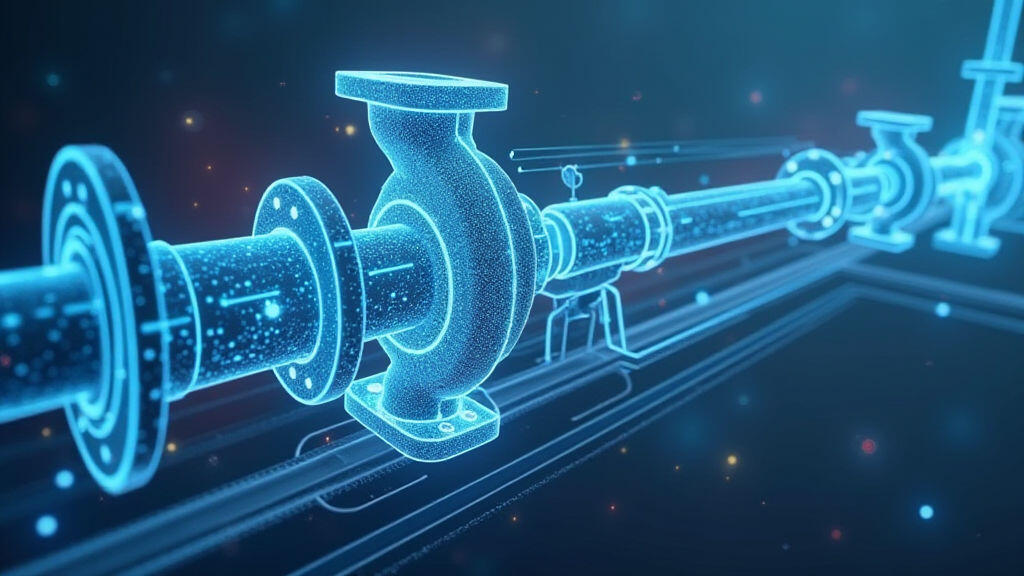Anjing Road, Xiaolan, Zhongshan, Guangdong, China
info@mes-drive.com
08.00 AM-09.00 PM

The relentless drive for efficiency, flexibility, and cost reduction in manufacturing is fueling a surge in the upgrading of automated production lines. A central component in these systems is the electric motor, and the configuration of variable frequency drives (VFDs) – the key to controlling motor speed – plays a critical role in the success of these upgrades. This article explores various VFD motor configuration strategies tailored for modernizing automated production equipment, focusing on benefits, considerations, and future trends.
Why VFDs are Essential for Upgraded Production Lines
Traditional motor control methods, relying on simple on/off switches or mechanical means like belt pulleys, lack the precise control and energy efficiency demanded by contemporary manufacturing processes. VFDs offer a sophisticated solution by allowing smooth regulation of motor speed, torque, and direction. This translates to numerous advantages:
Energy Savings: VFDs significantly reduce energy consumption, particularly in applications with variable load requirements, such as pumps, fans, and conveyors. By matching motor speed to the actual demand, wasted energy is minimized.
Improved Process Control: Precise speed control allows for finer adjustments in processes like material handling, chemical mixing, and machining, leading to enhanced product quality and reduced variations.
Reduced Mechanical Stress: Soft starting and stopping capabilities of VFDs minimize mechanical stress on equipment, extending its lifespan and reducing maintenance costs. The reduced inrush current during startup, for example, protects against voltage dips and damage to the motor and electrical infrastructure.
Enhanced Automation: Seamless integration with programmable logic controllers (PLCs) and other automation systems enables sophisticated control strategies and real-time optimization.
Key VFD Motor Configuration Strategies
The ideal VFD configuration varies depending on the specific application and equipment requirements. Here we examine several common strategies:
Scalar Control (V/f Control): This is the simplest and most widely used VFD control method. It maintains a constant voltage-to-frequency ratio (V/f) to ensure stable motor operation. While effective for many applications, it may not provide optimal performance under heavy or fluctuating loads. It's generally suitable for pumps, fans, and compressors where precise speed control isn’t paramount.

Sensorless Vector Control: An advancement over scalar control, sensorless vector control estimates the motor’s rotor position without requiring physical sensors like encoders. This allows for more precise torque control and improved dynamic response, making it suitable for applications like conveyors and mixers where torque variations are common. It achieves this by analyzing the motor's voltage and current waveforms.
Field-Oriented Control (FOC) / Vector Control (with Sensor Feedback): This sophisticated control method utilizes rotor position sensors (typically encoders) to provide feedback to the VFD. This allows for highly accurate torque and speed control, even under severe load conditions. FOC is commonly employed in demanding applications such as robotics, high-performance conveyors, and precise positioning systems. The use of sensors, while adding complexity, provides significantly enhanced performance.
Torque Control: Some VFDs offer dedicated torque control modes, optimized for applications requiring constant torque output regardless of speed changes. This is frequently seen in applications like cranes, extruders, and certain types of industrial robots. 
Regenerative Braking: This strategy allows the motor to act as a generator during deceleration, feeding energy back into the power grid or a storage system. This is particularly beneficial in applications with frequent braking events, leading to considerable energy savings. Regenerative braking is often used in applications like elevators and certain types of machine tools.
Considerations for VFD Configuration
Choosing the right VFD configuration requires careful consideration of several factors:
Motor Type: The motor’s design (e.g., induction motor, synchronous motor) greatly influences the suitable control strategy.
Application Requirements: The required level of speed and torque precision, dynamic response, and load characteristics are key determinants.
System Complexity: More sophisticated control strategies often require more complex system integration and configuration.
Cost: Different VFD configurations have different cost implications. Balancing performance requirements with budget constraints is crucial.
Network Connectivity: The ability to connect the VFD to a plant network for monitoring, control, and data logging is increasingly important for modern manufacturing.
Challenges and Future Trends
While VFD technology has matured significantly, some challenges remain:
Harmonic Distortion: VFDs can introduce harmonic distortion into the power grid. Mitigation strategies, such as harmonic filters, may be required.
Electromagnetic Compatibility (EMC): Careful design and shielding are necessary to minimize electromagnetic interference.
Cybersecurity: As VFDs become increasingly networked, cybersecurity risks must be addressed.
Looking ahead, several trends are shaping the future of VFD motor configuration:
Artificial Intelligence (AI) and Machine Learning (ML): AI and ML algorithms are being used to optimize VFD parameters in real-time, adapting to changing load conditions and improving energy efficiency.
Cloud Connectivity: Cloud-based VFD management platforms enable remote monitoring, diagnostics, and software updates.
Internet of Things (IoT) Integration: Integrating VFDs with IoT platforms allows for data-driven insights and predictive maintenance.
Enhanced Cybersecurity Features: New cybersecurity protocols and features are being developed to protect VFD systems from cyber threats.
Conclusion
Variable Frequency Drive motor configuration strategies are essential for upgrading automated production line equipment, offering significant benefits in terms of energy savings, process control, and reduced maintenance. From simple scalar control to advanced FOC with sensor feedback, the choice of the optimal strategy hinges on the specific application requirements. As technology continues to evolve, the integration of AI, cloud connectivity, and enhanced cybersecurity will further enhance the capabilities of VFDs, driving efficiency and innovation in manufacturing. The trend towards intelligent, connected, and energy-efficient manufacturing is heavily reliant on optimized VFD configuration, positioning it as a cornerstone technology for future production line upgrades.
Leave A Reply
Your email address will not be published. Required fiels are marked